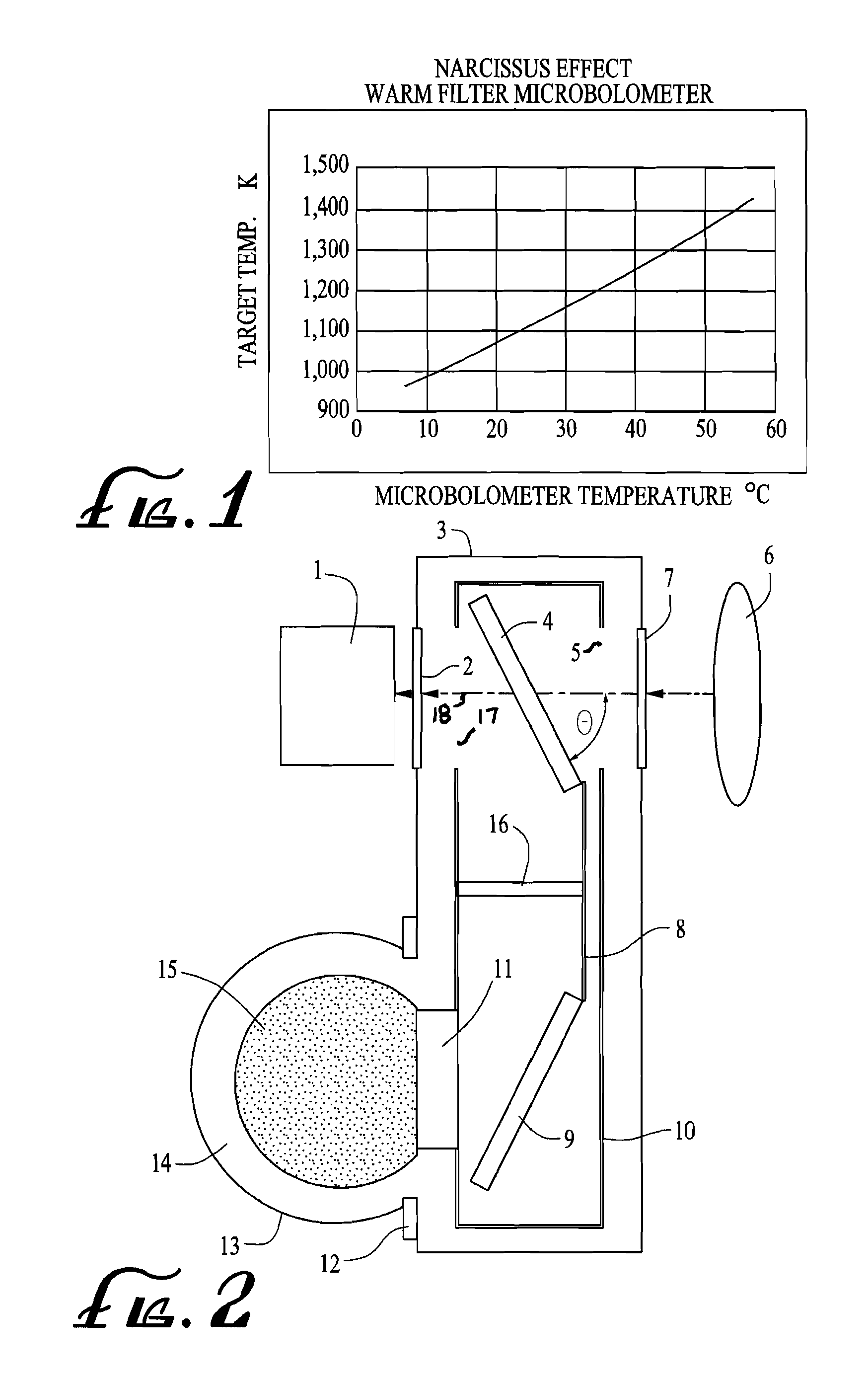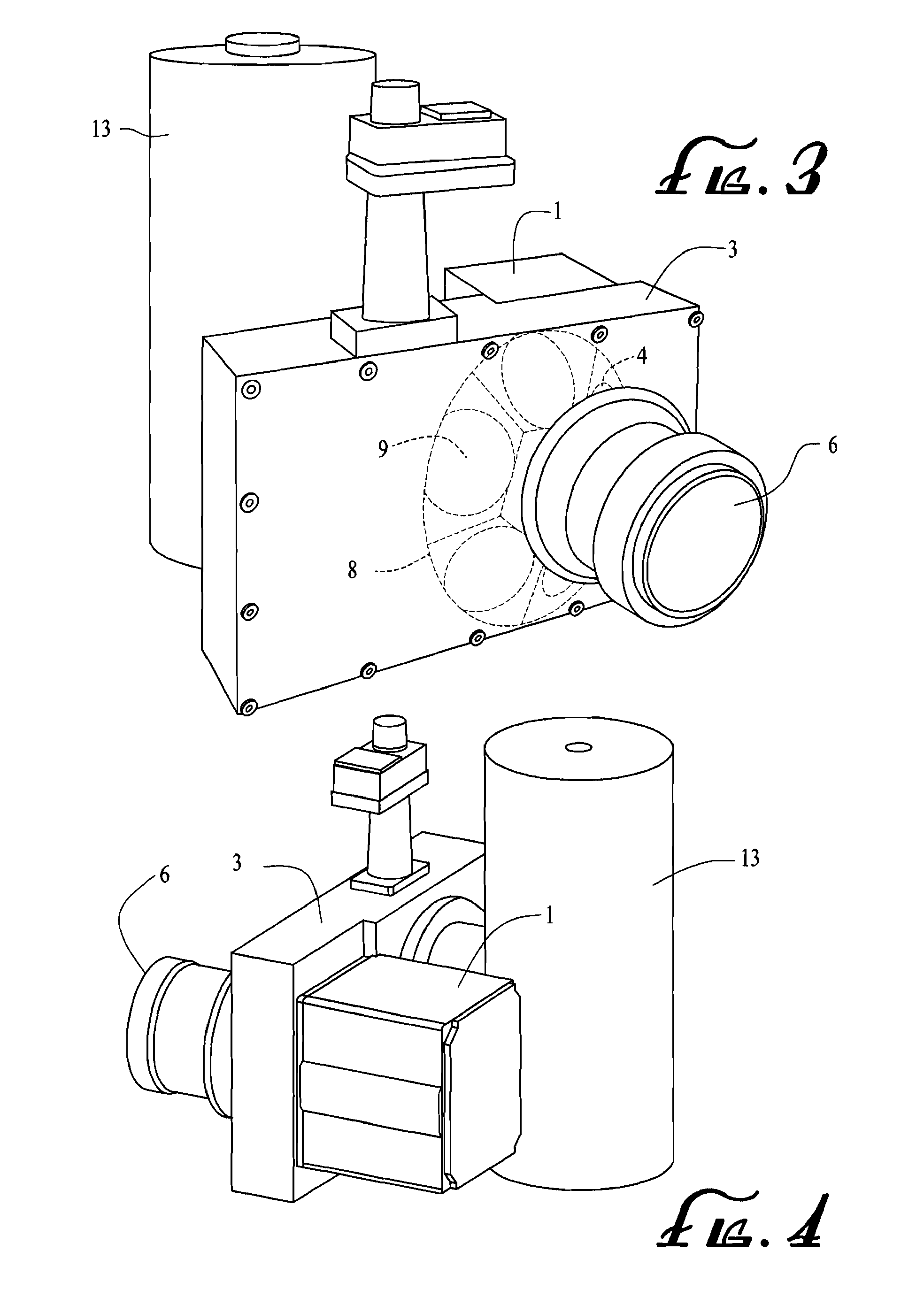Multispectral uncooled thermal infrared camera system
a multi-spectral infrared and thermal infrared technology, applied in the field of uncooled multi-spectral infrared camera systems, can solve the problems of high cost of commercial camera systems designed to collect multi-spectral imagery, the difficulty of using commercial spectral filters with microbolometer cameras, and the inability to cool quantum detectors cryogenically
- Summary
- Abstract
- Description
- Claims
- Application Information
AI Technical Summary
Benefits of technology
Problems solved by technology
Method used
Image
Examples
Embodiment Construction
In one salient feature of the present invention, an uncooled infrared camera system described herein below produces images of a scene or object in the thermal infrared region. The uncooled infrared camera uses a lens to capture and focus the thermal infrared radiation emitted by the scene or the object. The focused radiation is converted from photons or electromagnetic wave to electrical signal via a “detector”. The detector uses a “sensor” that works by a change in resistance, voltage, capacitance, or current when heated by infrared radiation. These changes are measured and compared to values at the reference condition of the sensor. In one embodiment, the sensor utilizes a matrix sensor array (e.g., 1024×1024 “pixels”) to produce an electronic image of the scene. The matrix sensor array, occupies a position at the focal plane of the lens (often called FPA—focal plane array, or alternatively an IRFPA—InfraRed FPA).
As part of an exemplary embodiment, a matrix sensor array described ...
PUM
 Login to View More
Login to View More Abstract
Description
Claims
Application Information
 Login to View More
Login to View More - R&D
- Intellectual Property
- Life Sciences
- Materials
- Tech Scout
- Unparalleled Data Quality
- Higher Quality Content
- 60% Fewer Hallucinations
Browse by: Latest US Patents, China's latest patents, Technical Efficacy Thesaurus, Application Domain, Technology Topic, Popular Technical Reports.
© 2025 PatSnap. All rights reserved.Legal|Privacy policy|Modern Slavery Act Transparency Statement|Sitemap|About US| Contact US: help@patsnap.com



